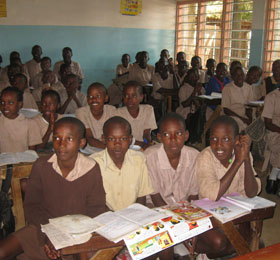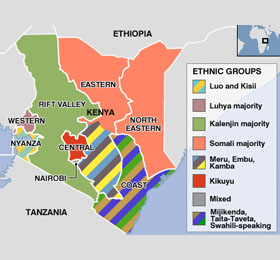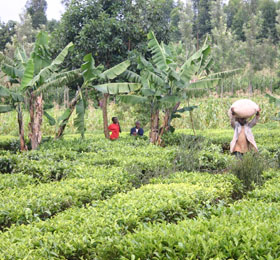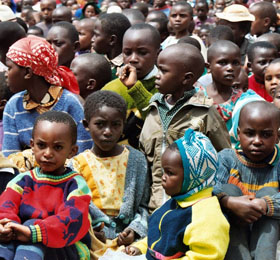Kenya
Geography
Location: Kenya lies across the equator on the East coast of Africa, bordering Somalia, Ethiopia and Sudan to the North, Uganda to the West, Tanzania to the South and the Indian Ocean to the East.
Area: Covers an area of 225,000 sq miles (582,646 sq km), approximately twice the size of Nevada.
Climate: Pleasant and favorable with plenty of sunshine all year round, rainfall is sometimes heavy around April to May while some areas go without much rain around July/August.
Major Towns: Nairobi (capital city)–2.75 million, Mombasa–0.8 million, Nakuru-0.26 million, Kisumu-0.22 million, Eldoret-0.22 million (2020 est.)
Education
Universal Primary Education: Introduced in 2003, added an extra 1.5 million pupils into the country’s primary schools, creating a lack of facilities and teachers; 58% of Kenyan adults over 24 have completed primary education.
Secondary Education: Less than 50% of the students who complete primary education go to secondary school, due to family economics, facility shortages, and testing scores; just over 14% of adults 25 and older have completed secondary school.
People
Population: Estimated at over 53 million (2020 est.), 75% live in rural areas.
Language: English (official), Kiswahili (national) and over 40 ethnic languages.
Religion: 45% Protestant, 33% Roman Catholic, 10% Islam, 10% Indigenous Religions, 2% Other, including Hinduism, Jewish.
Tribes: Kikuyu, Luo, Luhya, Kalenjin, Kamba, Kisii, Meru, Maasai, and other African and non-African (Asian, European, and Arab) groups.
Independence Day: December 12, 1963 (Jamhuri Day) – Independence from British colonial rule.
Mortality Rates
Infant Mortality Rate: Infant mortality rate: 30/1000 (2018 est.)
Under-5 Mortality Rate: 42/1,000 (2018 est.) (down from 120/1,000 in 2010)
Maternal Mortality Rate: 342/100,000 live births (2017 est.)
Life Expectancy: 66* (2018), up from 57 in 2010
Physician Density: 19/100,000 (2017)
*AIDS remain the #1 cause of death for Kenyan adults
Economy
Industry: Tourism, small-scale consumer goods (plastic, furniture), agricultural products processing, oil refining, cement.
Agriculture: Tea, coffee, corn, wheat, dairy products, sugar cane, pineapples.
Exports: Tea, horticultural products, coffee, petroleum products, fish
Currency: Kenyan shilling
Per capita income: $2,010 (2019 est.), 36% of Kenyans live below the poverty line. (less
than $1.90 per day)
Children
Orphans and Vulnerable Children (OVC): More than 3.6 million, 44% of those are orphaned due to AIDS; OVC account for 1/5 of all Kenyan children under the age of 18.
Child Labor: Almost 40% of children aged 5-14 are part of the labor force.
HIV / AIDS Prevalence: 5.6%, reduced dramatically from the 1990s, partially due to an increase in education and awareness, but also from high death rates.
Sources:World Bank, UNESCO, UNICEF, World Health Organization, Statista






